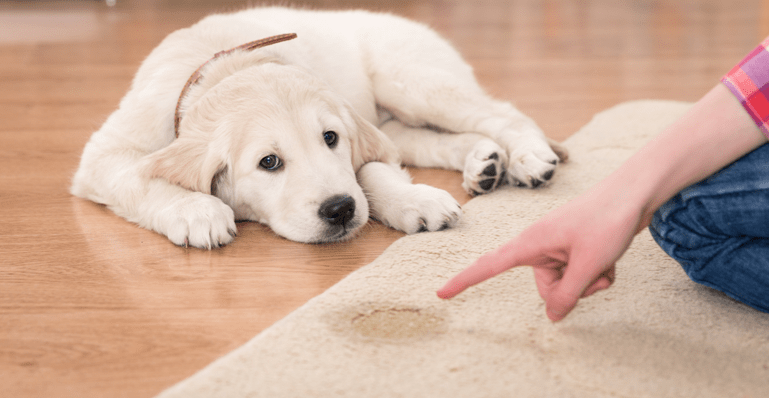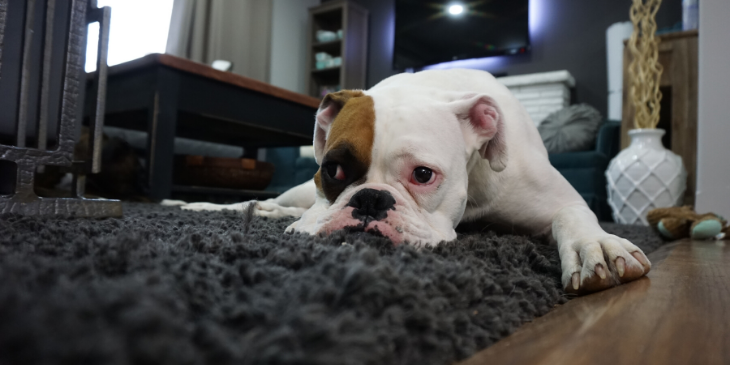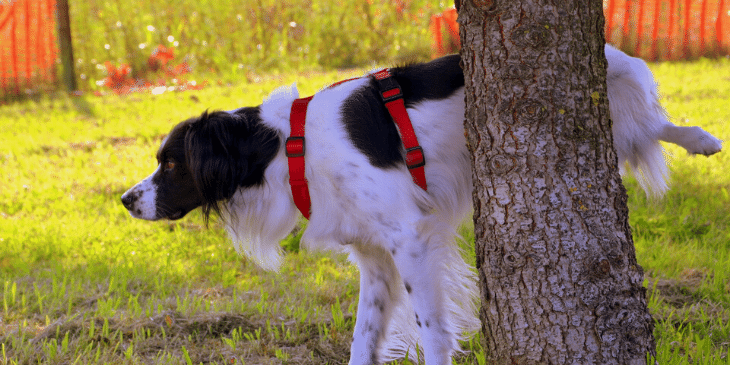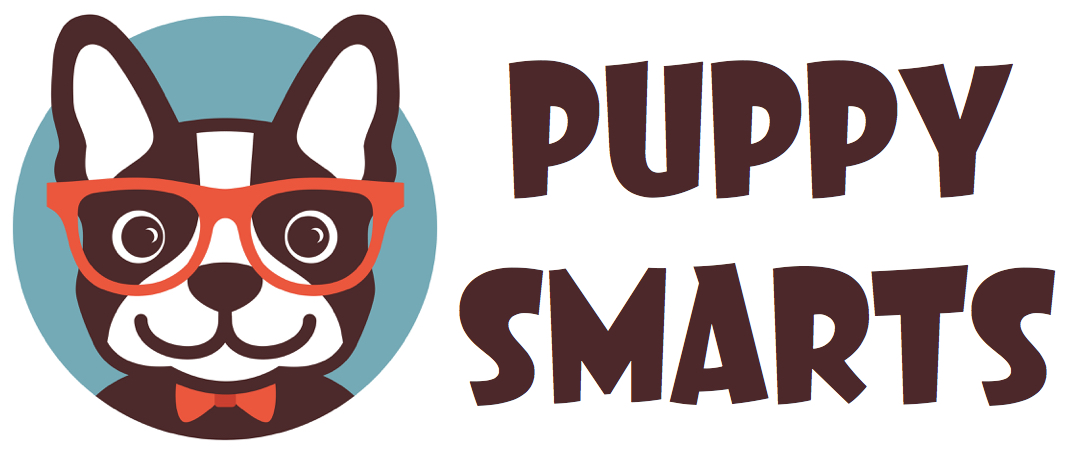How to Stop Your Dog From Peeing on the Carpet

Contents
Cleaning up dog pee isn’t anyone’s idea of a good time! If your dog is a puppy, it’s easy to excuse housetraining accidents due to a lack of bladder control. But, if your dog is an adult who is still urinating on the carpet, it’s especially frustrating!
Peeing on the carpet is a pretty common problem for dog owners. Thankfully, there are plenty of solutions to keep dogs from peeing indoors in the first place, and for removing urine odor.
Here are our top tips for how to stop your dog from peeing on the carpet for good!
Why is Your Dog Peeing Indoors in the First Place?
The first thing you need to do is get to the bottom of why your dog is urinating indoors. Be honest with yourself. Is he a puppy who is still learning? Was your dog ever really housetrained properly?
Is your dog spayed or neutered? If not, he or she is simply following a natural instinct to mark their territory (yes, even females mark their territory). In this case, you may not be able to resolve the problem completely without getting your pet spayed or neutered.
If you recently adopted a new dog, there’s a good chance he’s marking his new home with his scent, or he was never totally potty trained to begin with. If he’s pooping in the house as well as urinating, you’ve probably got a housetraining issue.
There are also some health conditions that can lead to a frequent urge to urinate. Urinary tract infections are the most common and they’re usually very easy to treat. A trip to the vet to rule out any medical conditions is probably a good idea, especially if you don’t believe the issue is housetraining.
Dogs that were previously potty trained may also have accidents in the house when they are stressed. In these cases, frequent potty breaks may be all that’s needed to correct the issue.
If you have an old dog or a dog with urinary incontinence who needs to pee very frequently, a doggie door could be your best solution. For older dogs or sick dogs who have no control over their bladder, doggie diapers will make life much easier and far less stressful for both of you.

Why Your Dog is Urinating on the Carpet
Why do dogs always choose to pee on the carpet, rather than a bare floor? Well, let’s take a look at it from your dog’s perspective. First, the carpet absorbs the pee, so he won’t get his feet wet when he goes.
Second, the carpet is outside of his sleeping area. Bonus! Most dogs won’t potty where they sleep, which is why crate training is so effective.
And, third, if he’s peed there before and can still smell it, his natural urge is to keep marking his territory. If you want him to stop, you’ve got to remove the urine smell completely.
How to Remove the Urine Smell from the Carpet
Removing the urine smell from the carpet is imperative for stopping your dog’s urge to continue marking his territory. And, of course, no one wants their whole house to smell like pee, either.
Nature’s Miracle Enzymatic Cleaners are the best way to clean old and new urine stains. This odor remover contains living organisms that actually break down the urine to completely remove any lingering odor, even from old pet accidents.
If the pet stain is new, start by blotting up as much of the urine as possible with paper towels. Once the spot is as dry as you can get it, saturate the area with the enzymatic cleaner and let it air dry.
If you don’t have an enzymatic cleaner on hand, white vinegar or a DIY paste of water and baking soda can also be very effective, especially on fresh accidents.
Remember, you want to focus on absorbing as much of the dog urine as possible first. Blot it up with paper towels, don’t scrub it into the carpet! Apply a generous amount of stain remover to the urine stain and allow it to sit for several hours to do its job.
Some dogs return to the same spot out of habit, even after the urine smell is removed. If you can, completely block your dog’s access to the area until he’s retrained. Repellents like Bitter Apple Spray, essential oils, or plain lemon juice sprayed on the spot with a spray bottle may also do the trick.
Why Puppy Pads are a Bad Idea
Many pet parents turn to puppy pads looking for a quick solution to potty training issues. This isn’t the best idea because it teaches your dog that it’s ok to pee in the house, instead of outside, where you really want him to go.
Also, puppy pads are soft and absorbent, much like carpet. It’s easy to see how a dog might have trouble telling the difference.
The only exceptions to this rule would be if you have a senior dog, a dog with incontinence issues, or a young puppy who can’t hold it for very long. In this case, you might want to train him to use a combination of a crate and puppy pad in a puppy playpen whenever you’ll be out for a while and he won’t have access to the outdoors.
If it’s a case of being at work all day, you’re much better off having a pet sitter come in and walk him in the middle of the day. Don’t set your dog up for developing bad habits by putting out puppy pads.

Re-Training Your Dog to Pee Outside
Once you’ve taken care of any possible medical issues and removed urine smells from the carpet, the next step is to retrain your dog to pee outside. Changing learned dog behavior takes some dedication on your part, but thankfully, it can be done if you’re willing to put in the effort.
There are two methods that are very effective for re-training a dog who’s developed bad habits.
-
The Crate Training Method
To crate train your dog, you’ll need to select a crate that’s just big enough for your dog to stand up in and turn around comfortably. It’s important that it’s not larger or smaller.
Make the crate into a cozy den where your dog can sleep and rest at night and whenever you’re not watching him. This is his place and he should love it… don’t ever use it as a punishment.
Take your dog out every two hours throughout the day, after each meal, and the moment he wakes up from a nap. Reward him with his favorite treats whenever he goes to the bathroom outside. He should be in the crate anytime you can’t supervise him closely.
-
The Tether Method
The tether method involves keeping your dog on a leash right next to you throughout the day. With this method, you’ll still walk him every two hours, after meals, and whenever he wakes up from a nap.
Anytime your dog squats, lifts his leg, starts sniffing the floor, or shows other signs of needing to potty, take him outside immediately. You will still need to crate him at night and anytime you’re away from the house or can’t watch him.
Tips for Success
The key to succeeding with either one of these dog training methods is to get your dog outside before he goes to the bathroom in the house. You must keep him in his crate whenever he can’t be tethered or supervised.
Offer praise and treats when he goes outside, but don’t scold him if he has an accident indoors. The last thing you want is for him to hide from you in a corner of the living room or some other out of the way area when he needs to go to the bathroom.
Dogs have a natural drive to explore and mark their territory. Taking your dog for a long walk every day encourages him to fulfill this instinct outside, instead of in your living room.
Final Thoughts
Inappropriate urination is very frustrating for pet owners, but it can be resolved. Once you’ve ruled out any health problems and removed pet urine smells from the carpet, use the crate training or tethering method to re-train him to go outside. With consistency and lots of rewards, he’ll be begging to go outside for potty breaks before you know it!

Great solutions. I have used commercial products that have cayenne pepper in them to stop Lady from peeing on the carpet.
That is a great deterrent as well. Thanks for the tip Maureen 🙂
Fantastic tips. I would have never have thought to use these solutions to get my dog to stop peeing on the rug. Thanks 🙂
Great article. We’ve practically tried everything and will use these as the last resort.
I have a rescue 7 mo. old male chihuahua. He refuses to potty outside. He urinated and defeated wherever he wants. I have had him two months. Nothing has worked.
What to do?